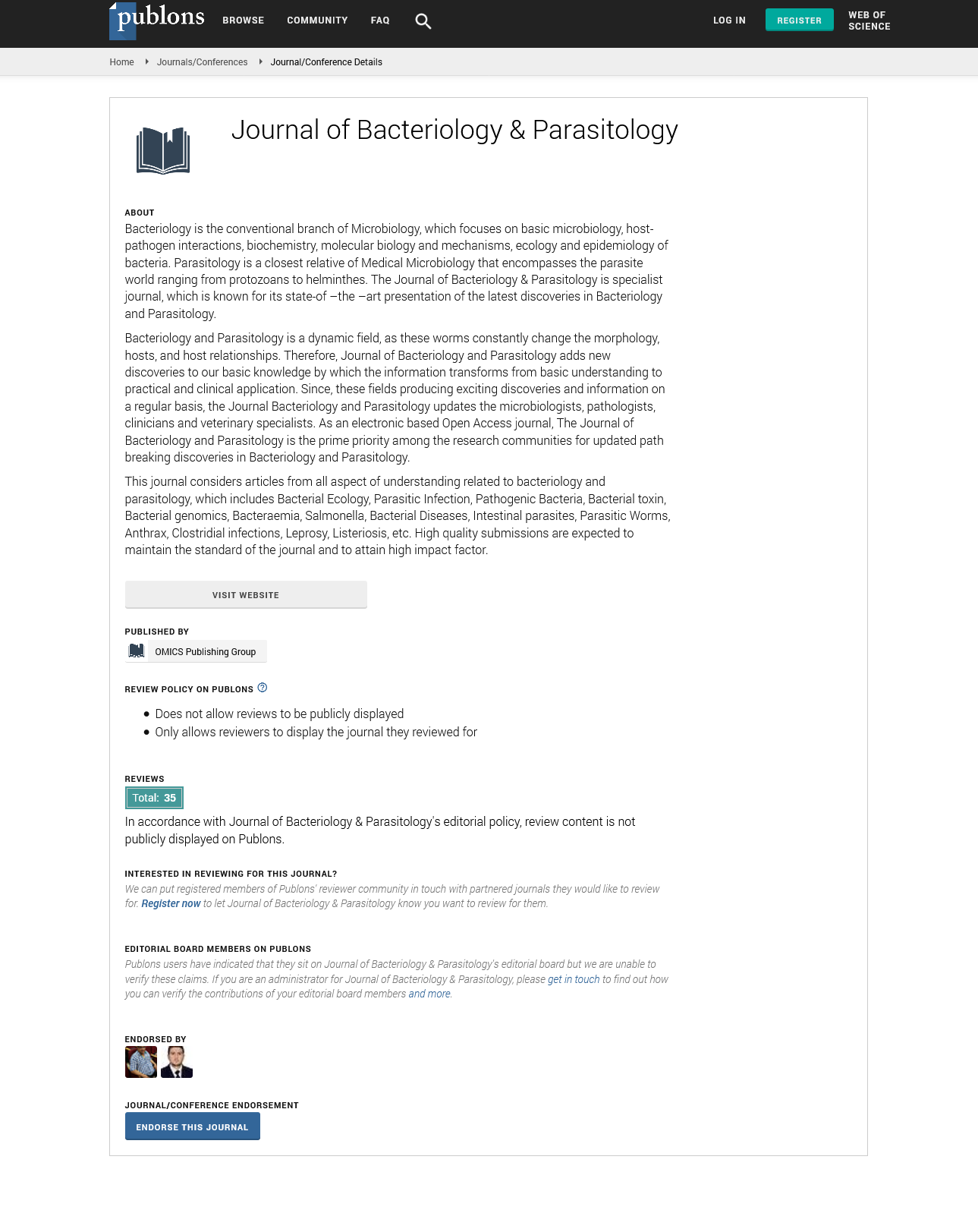Indexed In
- Open J Gate
- Genamics JournalSeek
- Academic Keys
- JournalTOCs
- ResearchBible
- Ulrich's Periodicals Directory
- Access to Global Online Research in Agriculture (AGORA)
- Electronic Journals Library
- RefSeek
- Hamdard University
- EBSCO A-Z
- OCLC- WorldCat
- SWB online catalog
- Virtual Library of Biology (vifabio)
- Publons
- MIAR
- Geneva Foundation for Medical Education and Research
- Euro Pub
- Google Scholar
Useful Links
Share This Page
Journal Flyer

Open Access Journals
- Agri and Aquaculture
- Biochemistry
- Bioinformatics & Systems Biology
- Business & Management
- Chemistry
- Clinical Sciences
- Engineering
- Food & Nutrition
- General Science
- Genetics & Molecular Biology
- Immunology & Microbiology
- Medical Sciences
- Neuroscience & Psychology
- Nursing & Health Care
- Pharmaceutical Sciences
Molecular epidemiological genetic diversity and patterns of gene flow in Haemonchus species affecting domestic ruminants in Egypt
5th International Conference on PARASITOLOGY & MICROBIOLOGY
July 12-13, 2018 Paris, France
Omnia M Kandil, Khaled A Abdelrahman, Nagwa A Eid, Lobna M Elakabawy and Mohamed A Helal
National Research Centre, Egypt
Benha University, Egypt
Posters & Accepted Abstracts: J Bacteriol Parasitol
Abstract:
Parasitic gastroenteritis brought on by H. contortus is the major compel in Egyptian sheep industry and their effects on production, animal wellbeing and welfare is likely to increase. Our study recorded Haemonchus species dissemination, hereditary differences and population structure among various hosts utilized from amplification and sequencing of mtDNA cytochrome oxidase subunit I (COI) gene distinguished at 709 bp and have been submitted in the gene bank with accession numbers (KT826575, KT826574, KT826573 and KT826572) for sheep, goat, cattle and camel, individually. The main identity percent was 93.5% amongst sheep and goat isolate with deviation percent 4.4%. The most reduced character percent was 80.2% amongst sheep and camel isolate with divergence percent 21.9%. The phylogenetic tree indicated clustering of sheep, goat and cattle isolates revealed that high rates of gene flow are operating among population and among various ruminant hosts as a result of intensively managed flocks. In contrast, H. longistipes confined from Egyptian camel indicated little homology with H. contortus and was the hereditarily most distinct taxa without clustering with different hosts in phylogenetic analysis. COI haplotypes from Egypt were contrasted with Haemonchus isolates from different countries to elucidate the population structure revealed that our isolates indicated most elevated identity with Haemonchus isolated from Pakistan. We likewise that H. contortus from sheep, goat and cattle exist in same Pakistani H. contortus cluster in phylogenetic tree and similarly H. longistipes. To our knowledge, these results can be used in a context of new gastrointestinal control approaches integrating more ecological tools. This work is the principal concentrate on which demonstrated hereditarily that H. longistipes is Haemonchus species of Egyptian camel.

